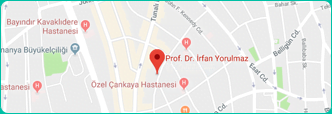
Septoplasty is the name of the surgical procedure for the correction of a deviated septum. During septoplasty the septum is aligned into the midline position, which is performed through the nostrils and with invisible incisions. The surgery usually takes about 1 to 1.5 hour. At the end of the operation, a splint or dressing is placed in both nasal cavities to support the corrected septum. This material is removed within few days after the operation.
Deviated septum is commonly accompanied by turbinate hypertrophy and therefore, turbinate reduction is usually required during a septoplasty.
What happens after septoplasty?
Your nose may be partly or completely blocked due to placed supports, secretions and clots. You will probably need to breathe through your mouth. Moderate bleeding and discharge from the nose is normal, and will gradually decrease.
How should I care after septoplasty?
- Keep your head elevated on two to three pillows.
- Do not touch your nose.
- Use your medications regularly.
- Do not blow your nose until your doctor allows it; this may take 7 to 10 days.
- You may take a shower the day following surgery; not too hot and not too long.
- There will be drying and crusting in your nose. Using an air humidifier may help a lot.
- Your doctor will define how to rinse your nose; do not use tap water.
- Complete recovery within the nose will be completed within 4 to 8 weeks. During this time, visit your doctor as recommended.
Is there an age limit for septoplasty?
There are centers of growing of the face on the nasal septum. Therefore, septoplasty is rarely performed in children, in order not to disturb these centers. Unless necessary, septoplasty is postponed until age 18, when facial centers of growth are no more active and surgery does not have a negative impact.
Shall I need a second operation?
A second corrective operation may rarely be required if the septum loses alignment during the healing process, or by trauma. This is necessary in less than 2% of patients who had a septoplasty.


